-
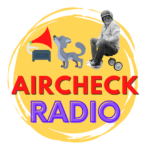 play_arrow
play_arrow
AircheckRadio Aircheck Radio
-
 play_arrow
play_arrow
Quid pro bros Vox
-
 play_arrow
play_arrow
Miami-Fort Lauderdale Barry Wright
By Kelly Parker, Aircheck Radio Enthusiast
In the heart of Jacksonville, Florida, a radio station once roared with a sound so powerful it echoed from Cape Canaveral to Cape Hatteras, captivating generations of listeners. WAPE, known as “The Big Ape,” was more than a radio station—it was a cultural cornerstone, a soundtrack to adolescence, and a beacon of community connection from its inception in 1958 through its AM heyday and into its modern FM era. For those of us who cherish the unscoped airchecks preserved on AircheckRadio.us, WAPE’s story is a nostalgic journey through the golden age of AM radio, when DJs were local celebrities, and the airwaves pulsed with music, jingles, and community spirit.
The Birth of The Big Ape
WAPE first crackled to life on October 23, 1958, as a 25,000-watt AM station at 690 kHz, built near Moccasin Slough in Orange Park, just south of Jacksonville. Owned by the Brennan Broadcasting family from Alabama, the station was designed to dominate the airwaves with a Top 40 format that resonated with the burgeoning baby-boom generation. By the 1960s, WAPE’s power increased to 50,000 watts daytime (10,000 watts at night, later upgraded to 25,000 watts), making it one of the most powerful stations in the Southeast. Its signal stretched across Florida, Georgia, and the Carolinas, earning it a massive audience and a reputation as a rock ‘n’ roll giant.
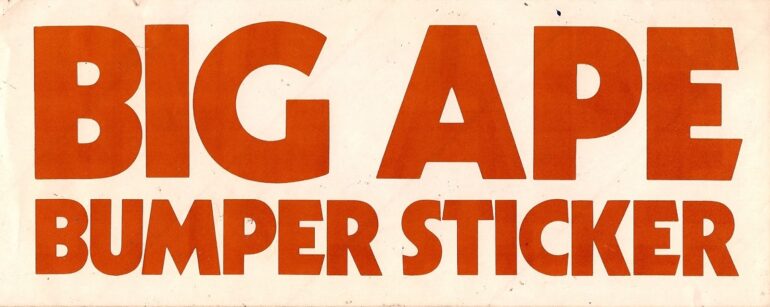
The station’s nickname, “The Big Ape,” was born from its playful branding, complete with a signature Tarzan yell that became synonymous with its identity. The Brennans, known for their showmanship, leaned into this persona with flair—think Cadillac convertibles blasting the ape call, a man in a gorilla suit handing out bananas at beaches, and a “Visitors Welcome” sign at the station’s futuristic Orange Park studios, dubbed the “radio country club in the middle of nowhere.”
Talent That Defined an Era
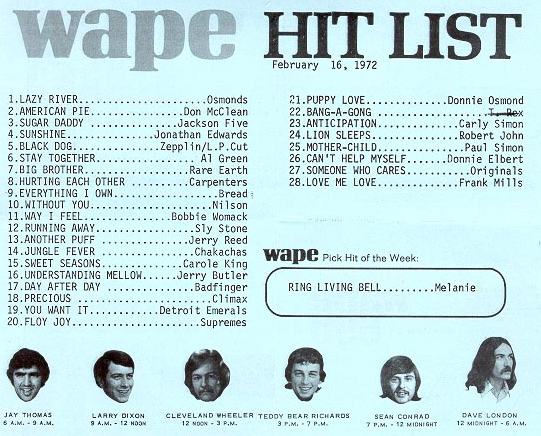 WAPE’s DJs, known as the “In Men,” were the heart of its appeal. These larger-than-life personalities connected with listeners through their charisma, humor, and deep ties to the local music scene. Among them was “Honest” John Ferree, who spun records from 1967 to 1971, hosting afternoon shows filled with dedications and requests. Ferree, now 79 and living in North Carolina, recalls the station’s open, informal vibe, complete with a swimming pool where fans could hang out. “It was just so open and informal… a real bond with the listeners,” he shared in a 2021 interview. His YouTube channel, filled with WAPE airchecks, preserves memories like meeting Jimi Hendrix at a 1968 concert sponsored by the station.
WAPE’s DJs, known as the “In Men,” were the heart of its appeal. These larger-than-life personalities connected with listeners through their charisma, humor, and deep ties to the local music scene. Among them was “Honest” John Ferree, who spun records from 1967 to 1971, hosting afternoon shows filled with dedications and requests. Ferree, now 79 and living in North Carolina, recalls the station’s open, informal vibe, complete with a swimming pool where fans could hang out. “It was just so open and informal… a real bond with the listeners,” he shared in a 2021 interview. His YouTube channel, filled with WAPE airchecks, preserves memories like meeting Jimi Hendrix at a 1968 concert sponsored by the station.
Other notable DJs included Arch Simonson (aka Alan Sands), who worked from 1967 to 1970 and cherished the freedom to play hits, album tracks, and deep cuts. Dino Summerlin, a charismatic figure, was both a DJ and a promoter, organizing dances and concerts that packed venues across the region. However, Summerlin’s antics, including alleged payola schemes and lip-syncing as Paul Anka at events, led to FCC scrutiny and a fine for the Brennans, who sold the station in 1970.
The roster of WAPE alumni is a who’s-who of radio talent: Jay Thomas, Douglas “The Greaseman” Tracht, Cleveland Wheeler, Ted ‘The Bear’ Richards, Mark “The Unknown DJ” Driscoll, and Marjorie “Marge Fizzy” Lou, among others. These voices brought energy and personality, making WAPE a household name for teens tuning in on transistor radios at the beach or in their cars.
Management and Showmanship
The Brennan family, led by Bill Brennan, a Harvard-educated electrical engineer, brought a unique blend of technical prowess and promotional genius to WAPE. Bill’s son, Bob Brennan, recalled their efforts to connect with the youth market through creative stunts and community engagement. The station hosted the “Big Ape Shower of Stars,” a concert series featuring national acts like the Beatles, who played Jacksonville’s Gator Bowl in 1964, alongside local bands like Lynyrd Skynyrd and the Classics IV. These events, often promoted by DJs like Summerlin, guaranteed packed halls and cemented WAPE’s role as a music tastemaker.
The Brennans’ hands-off approach gave DJs creative freedom, fostering a freewheeling atmosphere that listeners loved. However, this openness also led to questionable practices, like “hammering” records for payola, which contributed to Jacksonville’s vibrant music scene but drew FCC attention. Despite these controversies, the Brennans’ vision made WAPE a regional powerhouse, with a signal so strong it shaped musical tastes across five states.
Community Stories and Cultural Impact
WAPE was more than a radio station—it was a community hub. Listeners flocked to the Orange Park studios to make requests, dedicate songs, or simply soak in the vibe. Beverly Fedder Ewbanks, a retired Jacksonville resident, remembers tuning in as a teen: “WAPE was absolutely the station we all listened to most… it was with us as we went to sleep and when we woke up.” The station’s accessibility, from its open-door policy to DJs appearing at local dances and parades, created a sense of ownership for listeners.
Local musicians, like Rickey Medlocke of Lynyrd Skynyrd and Blackfoot, credit WAPE for their early exposure. “The Big Ape was our world, nonstop, day in and out,” Medlocke said, noting how the station’s playlist introduced Jacksonville’s youth to both national hits and local acts like Mouse and the Boys and the Soul Searchers. WAPE’s influence extended beyond music, with DJs covering events like charity basketball games and reporting on historical moments, such as the assassinations of Robert Kennedy and Martin Luther King Jr.
Engineering the Big Ape’s Sound
The technical wizardry behind WAPE’s dominance lay in its engineering. Bill Brennan, who built his first transmitter from surplus war parts, ensured WAPE’s 50,000-watt daytime signal was a technical marvel. The station’s clear, powerful modulation carried its signature ape call and Top 40 hits across a vast region, even overcoming AM’s limitations like static and interference. Listeners as far away as St. Augustine, 88 miles from Jacksonville, praised the signal’s clarity, as noted in a 2019 online review: “Clear. Crisp signal great modulation and carry… a powerful signal from the westside.”
The station’s transmitter, located in Orange Park, was paired with a directional antenna at night to comply with FCC regulations, protecting other stations on the 690 frequency. This engineering prowess, combined with the Brennans’ knack for promotion, made WAPE’s sound unmistakable, whether blasting from car radios or portable transistors on the beach.
From AM to FM: The Evolution of WAPE
By the late 1970s, AM radio’s dominance waned as FM gained traction for its superior audio quality. WAPE’s AM station tried various formats, including country, but struggled to maintain its former glory. In 1989, the 690 frequency was sold and became WOKV, a news/talk station, and later a sports outlet, “ESPN 690.” The WAPE call letters moved to 95.1 FM, which had started as WJAX-FM in 1949. Under Cox Radio’s ownership since 2000, WAPE-FM has thrived as a Top 40 station, branded once again as “The Big Ape.”
Today, WAPE-FM remains a Jacksonville staple, with a 100,000-watt signal broadcasting from Downtown Jacksonville. The morning show, hosted by Dex and Barbie T, keeps the station’s community spirit alive with segments like listener stories about prison breaks and quirky contests offering cash prizes. While the AM era’s freewheeling vibe has faded, WAPE-FM continues to connect with listeners through modern platforms like iHeartRadio and its own app, maintaining its legacy as Jacksonville’s hit music station.
Preserving the Legacy on AircheckRadio.us
For radio enthusiasts like myself, AircheckRadio.us is a treasure trove that brings WAPE’s AM heyday back to life. Unscoped airchecks capture the essence of the era—DJs’ banter, jingles, commercials, and the music that defined a generation. These recordings, often shared by former DJs and listeners, preserve the voices of Honest John, Alan Sands, and others, along with the ape call that once dominated the airwaves. As AircheckRadio.us notes, unscoped airchecks are invaluable for “preserving the true sound and spirit of radio as it was heard live,” offering a time capsule for those who grew up with WAPE and a window into the past for younger listeners.
WAPE’s story is one of innovation, community, and a touch of mischief, from its AM glory days to its modern FM presence. It shaped Jacksonville’s music scene, launched local bands, and gave teens a voice through the airwaves. For those of us who love radio’s golden era, the Big Ape’s roar lives on in the airchecks that keep its legacy alive, reminding us of a time when AM radio was king and WAPE was the heartbeat of Jacksonville.
Written by: Barry Wright
Similar posts
Most Liked Airchecks
Events
Support Aircheck Radio
Copyright 2025 Aircheck Radio is a proud listener supported 501(c)(3) nonprofit organization

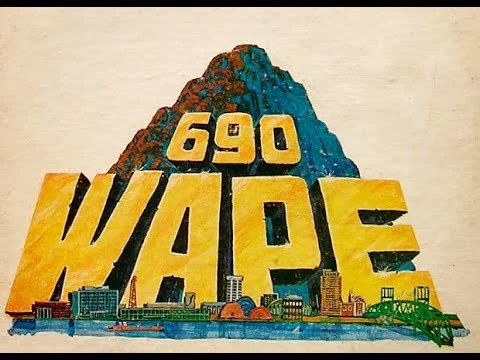
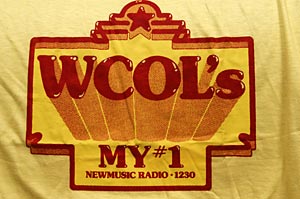
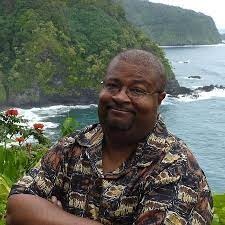

Post comments (0)